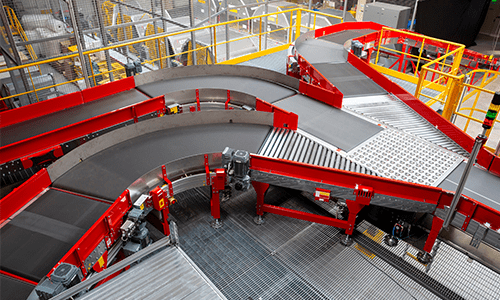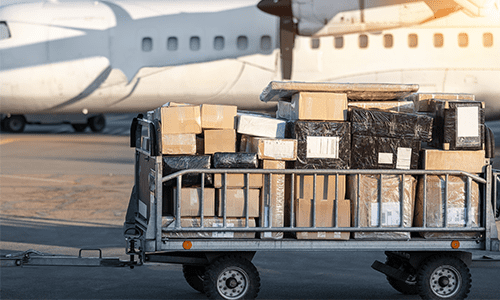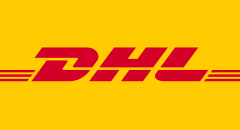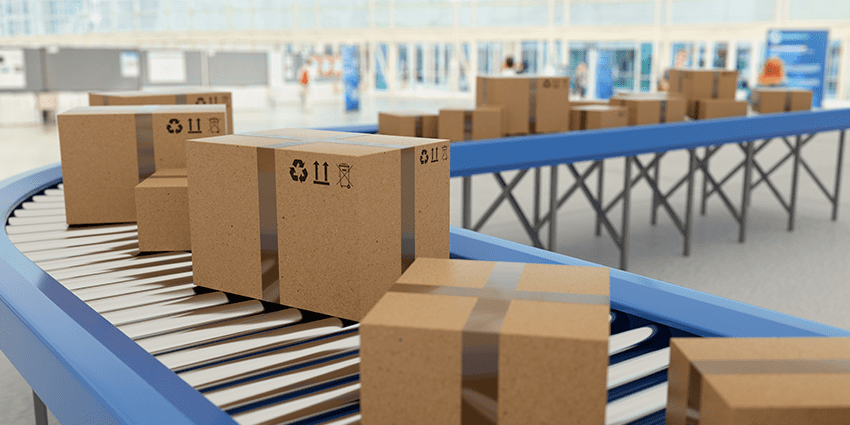After your package is picked up from your address or drop-off point, it has a long journey ahead. Depending on the courier service, thousands of parcels of all shapes and sizes travel many miles on various modes of transport before they reach their destination. That's why you must package your item sufficiently and complete any required shipping documentation. If you're curious about the shipping process - keep reading!
What are the stages of parcel delivery?
Domestic deliveries have a shorter journey than international parcels. However, the process is probably more complex than you think. Your parcel doesn't just get collected and head straight to the recipient's address - there are quite a few stages in place to handle the volume of packages that come through the courier network.
Your parcel will travel on and off vehicles or aircraft, move along automated conveyor belts, and be checked by scanners and x-rays. Here is a quick comparison of journey lengths for domestic and international parcels:
Local UK delivery

- The parcel is collected straight from your door or drop-off location
- The parcel is sorted at the local depot
- Parcel is routed to the courier hub
- The parcel is sent to a delivery depot
- Shipment is out for delivery
- The parcel is successfully delivered
International journey
International shipping is a longer process. Similar to when you go on holiday abroad, there are quite a few security stages to pass in order to leave and enter a new country.
- The parcel is collected straight from your door or drop-off location
- The parcel is sorted at the local depot
- Parcel is routed to the courier hub
Now, this is where it is slightly different:
- International deliveries travel to the airport for customs clearance - this is a crucial stage whereby shipments are scanned and x-rayed. Any prohibited or restricted items will be flagged, and commercial invoices are verified
- If the shipment is cleared, it will board the aircraft
- The parcel arrives in the country of destination
- Shipment will go through customs in the arrival country - this is why we ask you to check both our prohibited items list and the country's specific requirements. During busy periods, packages can be held at customs
- The shipment is sorted again then back on the road for delivery
- The package is successfully delivered

For detailed shipping events, track a package online 24/7 using our free tracking portal.
What does this mean for you?
Delivery processing begins with successful parcel preparation. To help ensure your parcel delivery is as smooth as possible, you must adhere to the following:
Check if your item is prohibited or restricted before you book
Different delivery companies and countries have their own rules on what you can and cannot post. If you're sending a parcel abroad, you must check the destination country's restrictions and regulations. If you're unsure, contact local customs.
Pack your item in protective material

Unless it is a packet service, your goods must be encased in cardboard to travel on any of our courier services. We recommend you choose a strong, corrugated cardboard box and cushion the item with sufficient protective materials like bubble wrap, packing peanuts or shredded paper, and seal the box with packing tape.
Enter the correct contact information
When you place a booking with us, we ask you to provide up-to-date contact details for you and the recipient. We ask you to provide this information in case there are any issues or delays with the order. Typically, customs authorities will liaise directly with the receiver regarding any outstanding customs duties or fees.
Complete necessary customs documentation (international parcel services only)
Your commercial invoice informs customs authorities of everything they need to know about the contents of your parcel, including an item description, country of manufacture, HS code etc. They use this document to determine if any local duties or tax is due. We incorporate the customs form within the booking process, so you can complete all the required fields to print off and attach to your shipment. We've recently put together an updated guide on how to successfully complete a customs invoice which explains what is required for each section of the form.
If you realise you have made a mistake or something isn't right with your booking, speak to our friendly customer service team. They can assist with your Interparcel order over the phone, via email, or on live chat seven days a week.
Track package 24/7
Once your package has been scanned by the courier and is on the move, use our free self-service tracking portal to monitor the progress of your delivery. Your tracking number will start with GB followed by ten digits. You can find your tracking number in your booking confirmation email, or in 'My Orders'.
During the booking stage, you can also select to receive our free email or paid SMS notifications to keep yourself or the recipient in the loop.
Start sending today
We hope this article has identified the stages of the parcel delivery journey. We've highlighted the importance of preparing your shipment for a successful delivery and demonstrated how easy it is to track a package online. If you have a parcel to send, get a quick quote today!
Enter your parcel details and destination to browse our discounted parcel courier services, including Economy, Next Day, Express, Timed and Same Day.





As well as our low-cost multi-carrier delivery solutions, our free shipping tools and account features and benefits make sending parcels and packets simpler. For instance, Bulk services are designed to reduce the cost of sending batches of parcels internationally, giving you the opportunity to expand into overseas markets for less . Similarly, our business tools like Branded Tracking ensures takes your post-purchase experience to the next level. You can add your logo, custom colours and promotions to your unique tracking page in a few easy steps.
Book with us today and track a package with ease!










 Facebook
Facebook Twitter
Twitter Instagram
Instagram Linked In
Linked In YouTube
YouTube